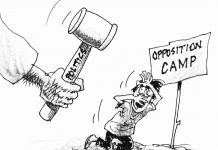In some sort of Literary Festival, I chanced to hear a young Waray writer, hardly past her twenties, recite one of her poems in raw, uncut Waray. The crowd became silent, awed—not only by the force of her voice but by the sense that something long buried was finally being expressed. And I said to myself: this is not an instant. This is a movement.
Too long, Eastern Visayan literature dripped rather than flowed. Our words were always discounted as provincial resonance within the national literary community—too regional, too raw, too harsh in texture. But that discounting, I now see, was a misunderstanding of possibility. It was not silence we lived with—it was incubation. And what we’re witnessing today, from school-based writers’ guilds to university presses unearthing Waray manuscripts, is proof that incubation breeds not only life but urgency. Our creative writing community, once scattered and tentative, is now gaining momentum, depth, and fierce clarity of vision.
It’s not merely a matter of young people writing. They are writing with defiance and resistance, in the voice of their weeping mothers and inebriated uncles, their street vendors and wailing grandmas, in the very idioms born from ricefields, oceans, gossips, prohibitions, typhoons, and church bells. They are writing in Waray, not due to romanticization of the past but due to resistance—the erasure of their experiences, the linguistic suppression of their language, and the hackneyed theme of Manila-centric stories. They are not appropriating tales. They are appropriating what is theirs. And their ownership of their own fiction is keen and challenging.
Most accountable for this renaissance is a voice that dared to speak out long ago when it was all the rage to be otherwise and dangerous to defy. Merlie Alunan has charted emotional terrain for us that transcends provincial boundaries. Vic Sugbo’s critical writing added intellectual substance to our words—it would no longer be all talk. Dave Genotiva did not just write, he trained, mentored, irked, and handed over the baton. Then there are the immeasurable, immeasurable others—the teachers who introduced Waray literature to the classroom, editors who bet on Waray manuscripts, and culture workers who busted budgets just to print one chapbook. I count myself among them, not out of arrogance but out of a deep, stubborn love.
What’s most thrilling about the region’s current literary shape is how it refuses neat categorization. The writing here is not always polished, but it is always alive. You’ll find a short story about a fiesta lechon gone wrong alongside a philosophical poem about Yolanda’s aftermath. Humor side by side with sadness, and folk will never be still. There is some decadent rawness to it all—a writing that resonates with the land it springs from: volcanic, green, stony, rain-beaten, storm-tempered. It is not imitative literature—it provokes.
This maturity I refer to is not tone or method—it is bravery. These young authors are no longer satisfied to write for school contests or Facebook likes. They are writing in anthologies, showing up for writing fellowships, starting independent publishing cooperatives, and most of all, lifting each other. I have seen writers from Borongan arguing with writers from Calbayog at Zoom readings, and poets from Catarman producing zines with a kind of DIY fanaticism that would get any Manila-based lit fest pegged as tame.
There is democracy afoot, an equality of literary heart that doesn’t know gatekeeping.
But we cannot idealize. The direction is upwards. Publishing outlets are still few, and institutional support—LGUs, schools, cultural commissions—is sporadic, best-case, or worst of all, mysteriously ritualistic. At times, the strongest barriers are in here: the self-fulfilling prophecy that writing in Waray is “less.” But with each poem, every story, every essay written, read, and passed around, the deceit strips away that much further. Every work is a defiance in miniature, a light in the darkness of cultural forgetfulness. And no more stumbling about seeking fire—now we’re burning fields of it.
If this is a revolution, make it so. Not with anarchy but with polite, persistent insistence. Let writers write in the rhythm of their coastlines, in the vocabulary of their barangays, and with the courage acquired from their own soil. But preferably, let local writing be taken seriously by schools. Let municipalities supply reading rooms, not tarpaulins and bunting. And let us, further down the road, continue to keep clearing the trail—not for praise, but because we know what is being sacrificed in silence.




